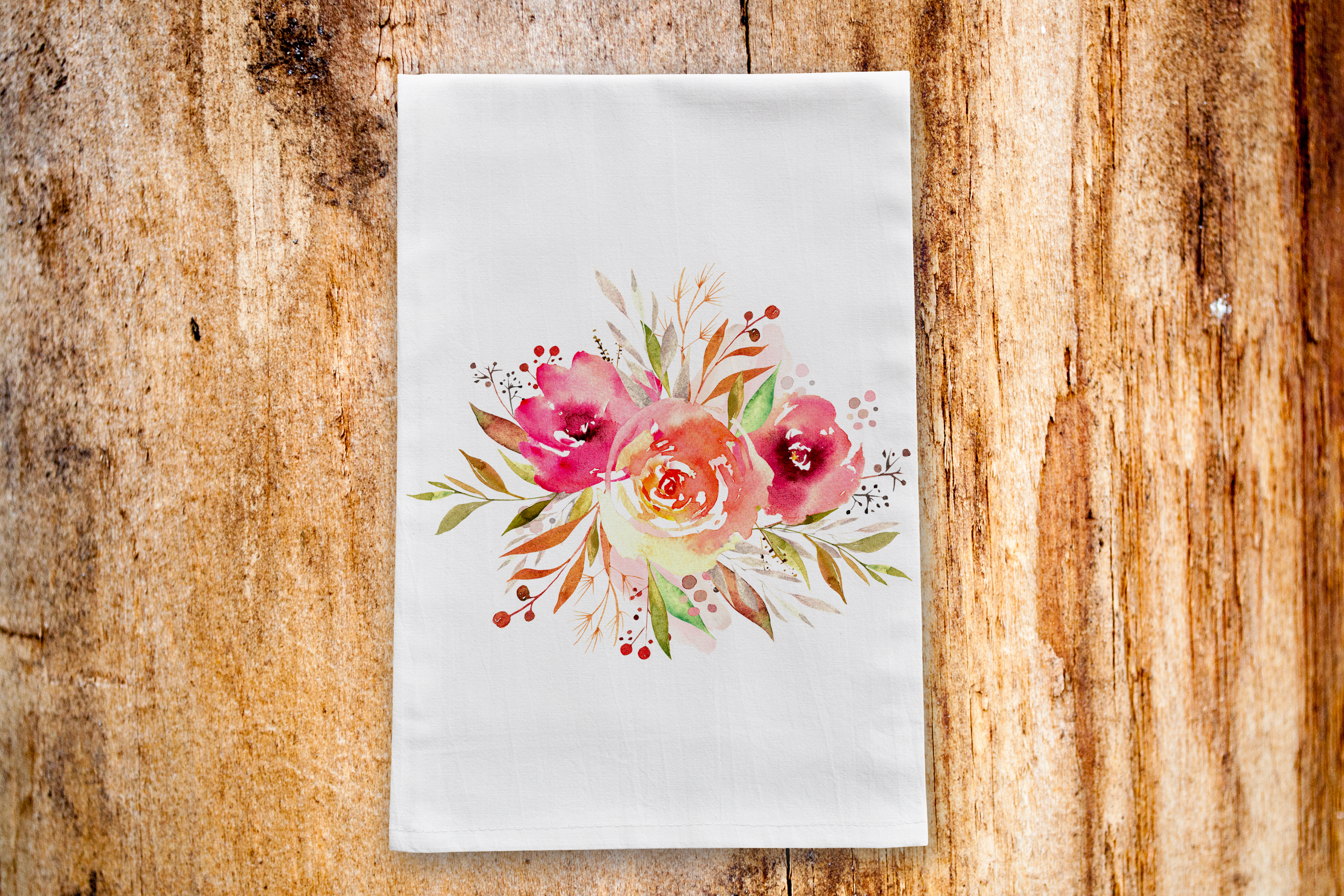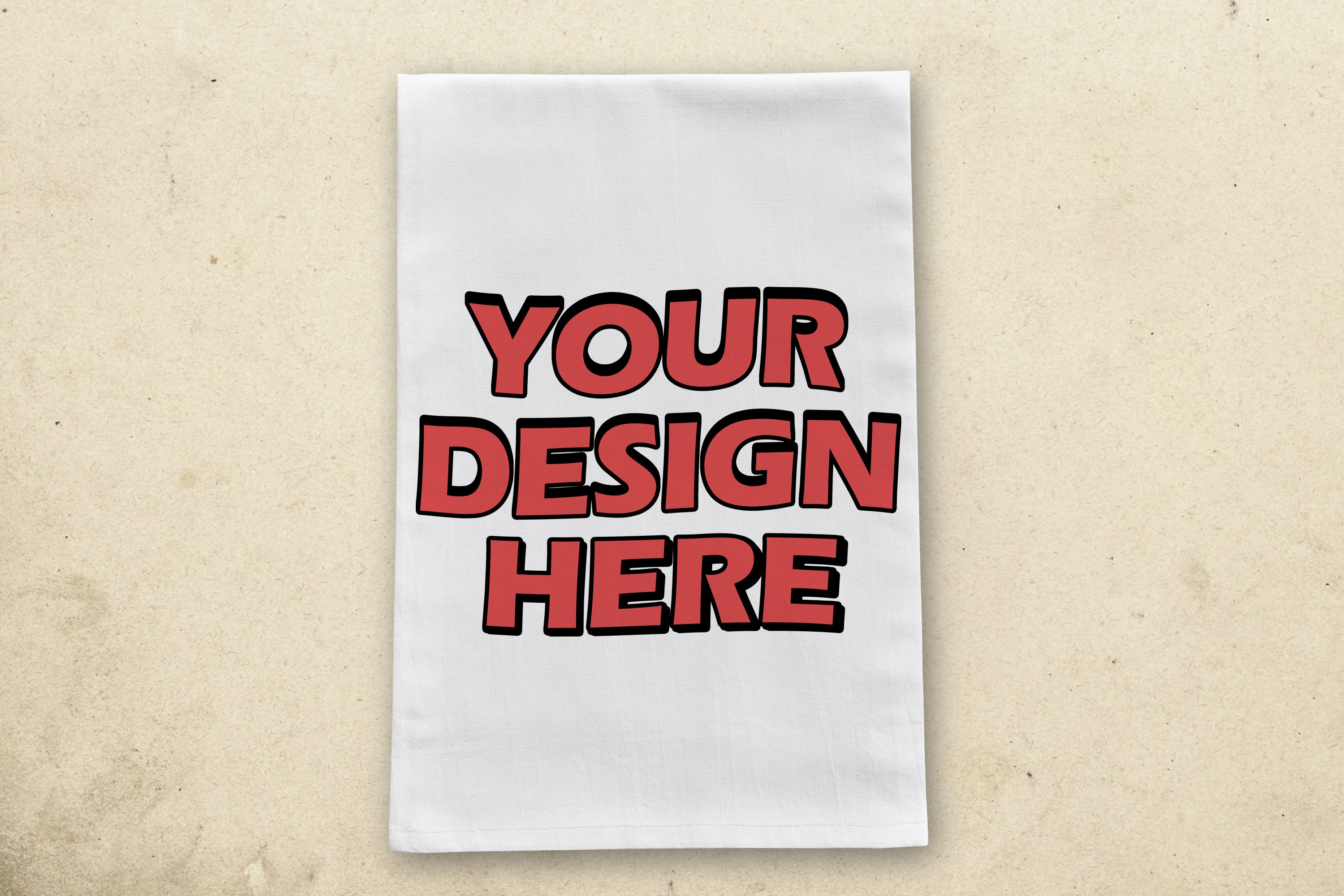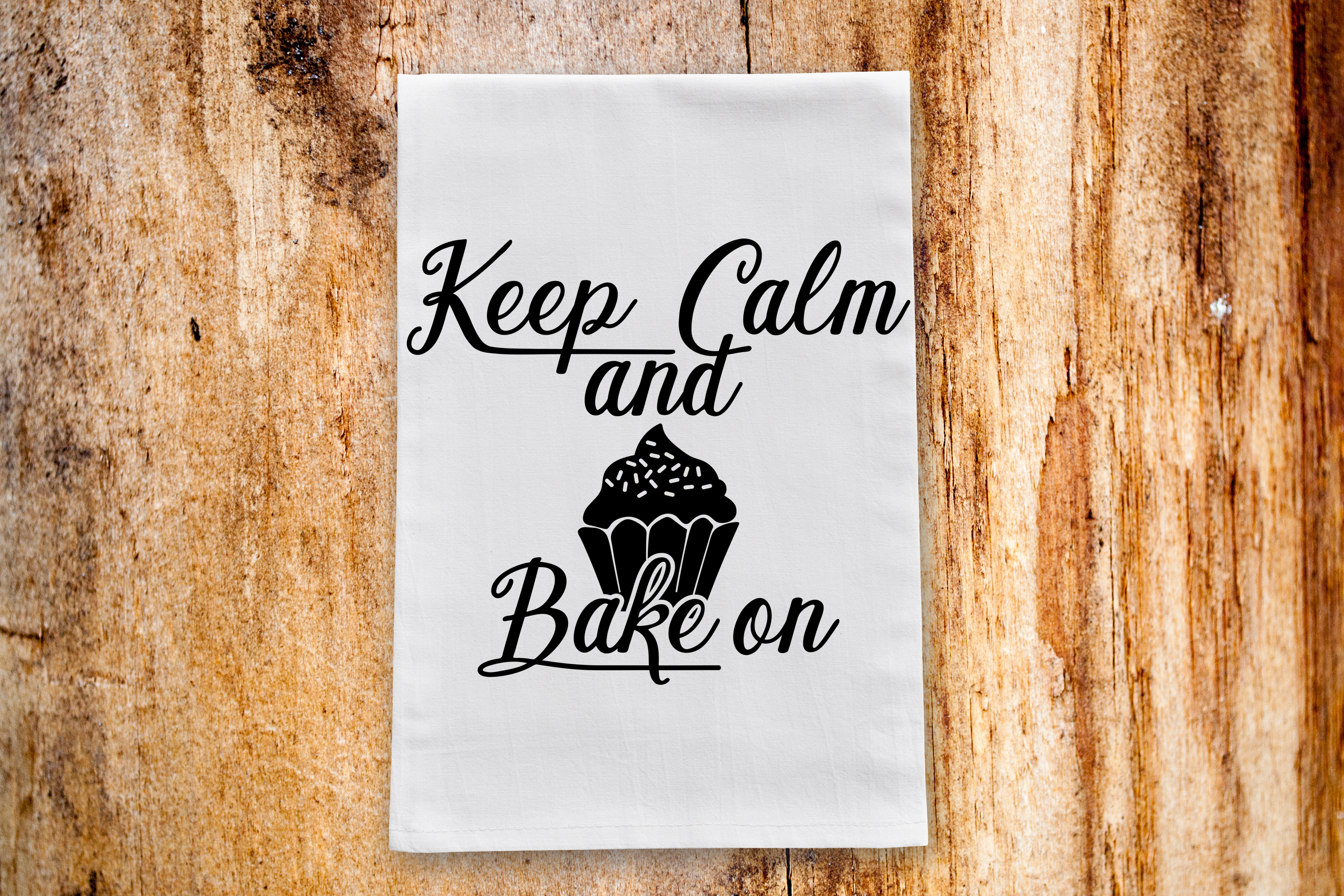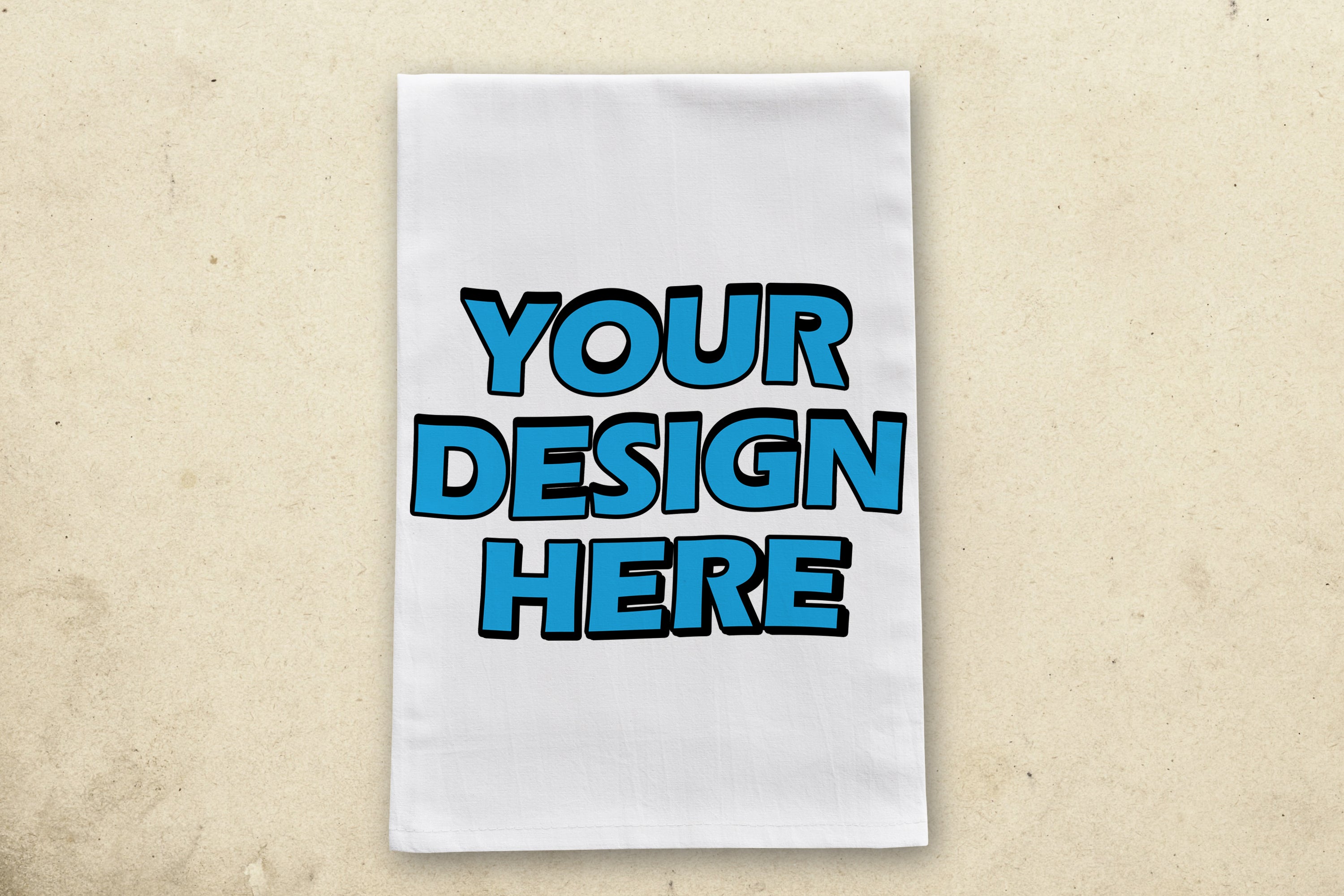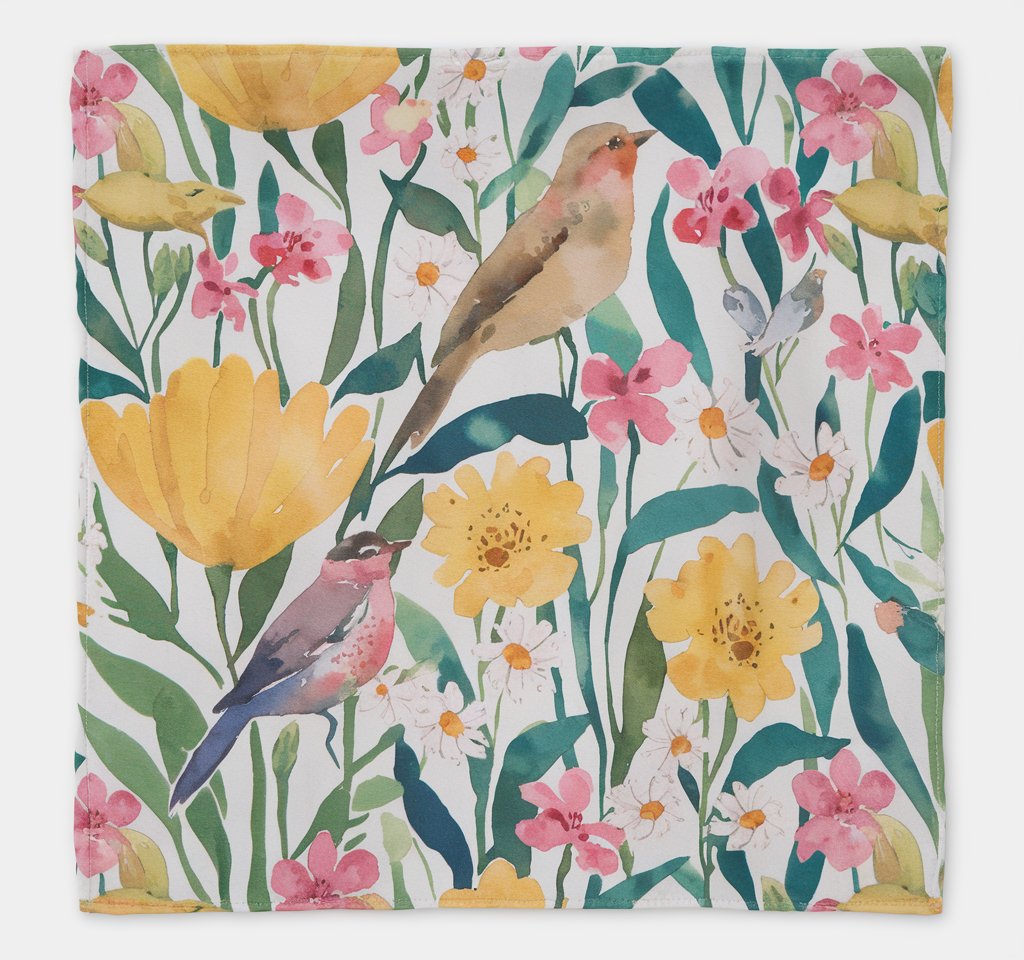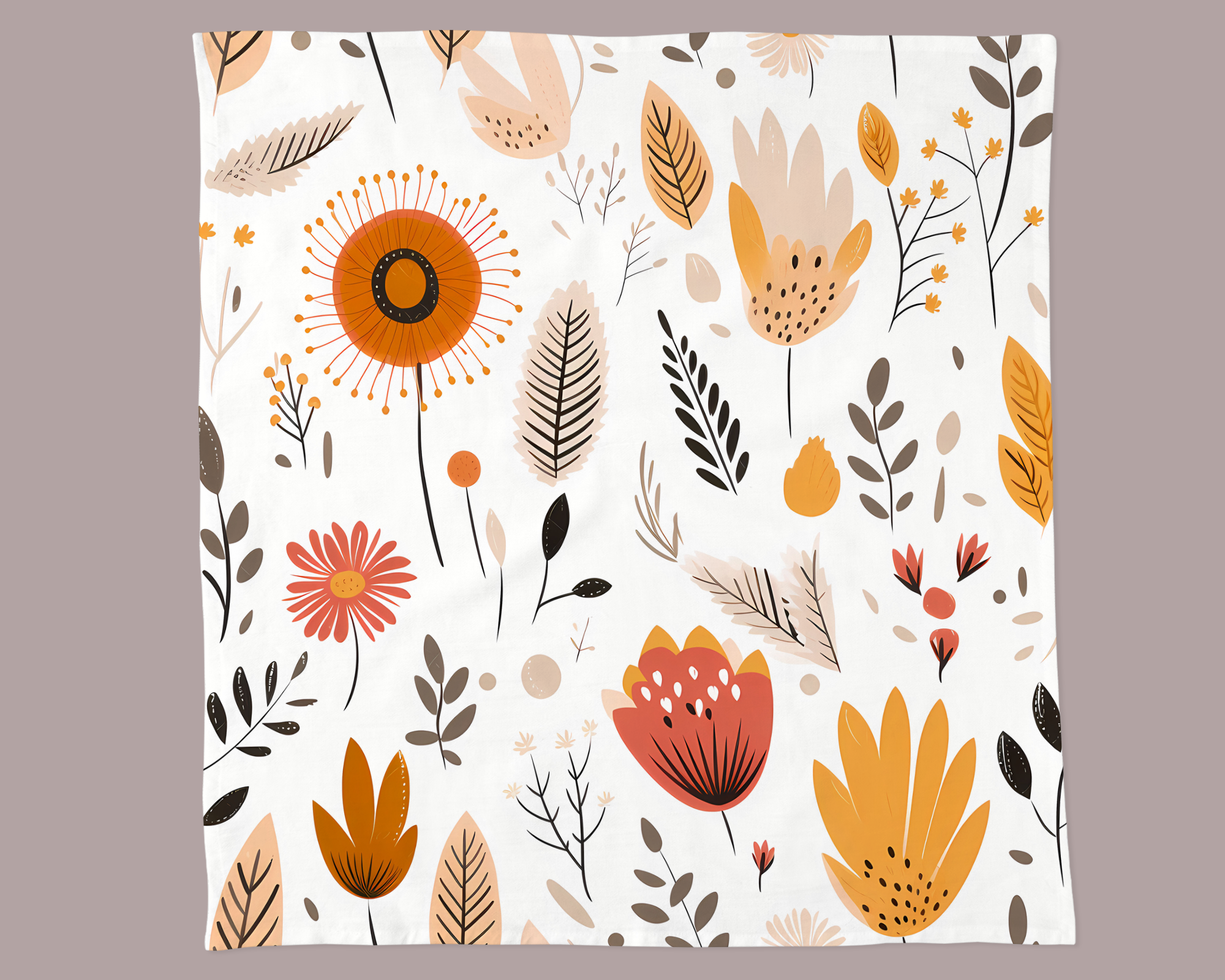Artists utilizing custom tea towels as their canvas have become a growing trend for displaying artistic expression. Whether your artwork attracts a smaller crowd or has thousands of followers, you can provide it with a different look by placing it on a tea towel. In fact, we'll be discussing how to create art that will look fantastic on tea towels throughout this article. If you're a designer or artist, this is information you really need to have!
In brief, we'll be pointing out why the material of tea towels lends itself well to custom art. Next, we'll segue into important design considerations to ensure your towels look their best. Additionally, we'll look at the best way to create your design file, go over some quality control tips and end the article with proven tips for marketing and selling your towels. In other words, we'll show you the entire process, starting with the initial concept all the way through making a sale!

1. Understanding the Medium: Flour Sack Towels
It's actually a much better idea to turn to flour sack towels instead of a tea towel. Although these two terms are often used interchangeably, they're not actually the same thing.
Material Characteristics
The first notable difference between a flour sack towel and a tea towel is the type of material that is used. Whereas a tea towel is typically a thin towel that is meant for polishing and drying things, a flour sack towel is made of a sturdier, thicker material. It happens to be more versatile and absorbent too. At the same time, flour sack towels have the advantage of not holding onto bacteria in the same way as standard tea towels. It is best not to use them in a bacteria-filled area, however.
Importance of Choosing the Right Canvas
Choosing 100% cotton flour sack cloths will provide you with exactly the right canvas. If you were to choose, for instance, a traditional tea towel, it wouldn't have the same level of thickness, which can allow your artwork to erode much more quickly. Meanwhile, choosing materials such as Egyptian or Turkish cotton provides a surface that is overly soft and even fluffy, which will not offer the right aesthetic appearance.
2. Designing for Flour Sack Towels
Although designing for flour sack towels works quite well, it's still important to take certain design considerations seriously. Otherwise, you won't end up with a final product that looks the way you'd like.
Design Considerations
Color: For the most part, the colors that will look best on your towels will be determined by its base color. A prime example is that a white flour sack towel won't look right with a light color on it. In broader terms, using bright, vivid colors tends to work best.
Scaling and Placement: It's generally considered best to make your overall design 27" wide by 18" long. Importantly, though, your design safe zone will be closer to 22.5" wide by 14.5" long. Don't exceed the smaller safe zone unless you want your art to get cut off and look unprofessional.
Detailing and Line Work: To achieve a suitable look, be sure your design incorporates boldness and clarity. Tiny details won't transfer nearly as well as big, bold lines. You can technically print anything on these tea towels, but smaller details may end up getting lost when contrasted against bigger details.
Incorporating Functionality
Your flour sack towels might be sold with the intention of going on display, but you must remember that some people will use them in their kitchens for daily cleaning. Therefore, it's important for you to strike a balance between artistic expression and the towel's intended purpose. One thing you can do is place a design only on one side of the towel. Another is, again, to use bigger, bolder colors, rather than colors that will quickly take on a 'washed out' effect.
It's common for tea towels to have a recipe or measurement conversions on it. You can incorporate either of these into your design, as long as you make this decision at the beginning. One example is to create an artistic box that contains a recipe. Alternatively, you could design a couple of flowers, and place them at the top and bottom of the recipe.
3. The Printing Process: From File to Fabric
You can make a design in a wide number of different programs, and not all of them will provide your file in a useful format. This means it's crucial to pick accordingly.
Preparing Your Design
To ensure your design is prepared correctly, use the following steps.
- Choose your file format (PDF often works best)
- Allow the proper bleed space
- Embed your fonts or convert them to vector paths
- Save your design
When it comes to color modes, you'll be forced to choose between CMYK vs. RGB. Fortunately, it's an easy choice because CMYK always works best for printing art. Furthermore, be sure to keep your design to no more than four unique colors.
Resolution means the difference between quality custom tea towels or towels that have a blurry image. It is always recommended that you make your design file 300DPI. It is possible to get away with 150DPI for large pieces that will be viewed from a distance, but that doesn't really apply to flour sack towels.
Deciding what file type to use is easy! Simply refer to the following:
- Vector: Text, illustrations and logos
- Raster: Textures, painting and photos
Be aware that vector models are more likely to retain their clarity when they're blown up to a large size.
Choosing the Right Printing Technique
There are five main types of printing:
- Screen printing
- Digital printing
- Offset printing
- Flexographic printing
- Rotogravure printing
Out of these, you'll most likely choose digital printing for your custom tea towels. Digital printing allows you to create a quality direct-to-garment (DTG) design that is intended for small-to-medium print runs. The results of DTG look fantastic and can really bring your design to life. Plus, this is the most affordable way to create your art.
You might also choose screen printing, but this isn't appropriate for a small-to-medium order. Instead, screen printing can be used when you're not as concerned about price, want a large print run and want to print a design with three or less colors. This requires being able to sell a large quantity of towels.
4. Bringing It to Life: Production and Quality Control
It's time to bring your custom tea towels to life! But before you place an order, be sure to consider the following points.
Sample Runs and Prototypes
No matter how confident you are in your design, it is always wise to produce a sample run. That way, you can see whether your chosen printing company can produce accurate, high-quality results. Furthermore, check your sample for texture, material durability and weight. Plus, take one last look to ensure everything is perfect on your side. Signs that you may need to try again include smudging or off-kilter letters.
Quality Control Tips
Each towel needs to have perfect print alignment, color accuracy and a good overall finish. The last thing you want is to produce a line of custom tea towels that are printed off center or turn your intended colors into completely different shades.
The best way to ensure proper quality control is by working with a professional printer and doing a prototype run in advance. If your prototype works perfectly and your subsequent products do not, you can contact your printer for assistance. The good news is that you most likely won't have to eat the cost because you allowed them to print a prototype for you.
5. Marketing and Selling Your Custom Tea Towels
The moment you've been waiting for has arrived! Now, it's time to start marketing your product.
Creating a Compelling Product Description
Your product description should blend each towel's functionality with your artistic merits. Certain words are always good to include such as "made from breathable and soft 100% cotton," "highly absorbent" and "large enough to wipe your hands and dishes." At the same time, make sure you include a description of your art such as "unique" or "colorful," along with telling the procedure you used to create it.
Photographing Your Towels
Flat lay photography will usually work best for photographing flour sack towels. In other words, lie your item flat on the floor and photograph it from above. By using the right lens and adjusting your light, you can capture amazing details that will show off the towel's texture, along with your design. Make sure to take a photo that shows your towel in use too.
Pricing and Packaging
Printing one color will usually cost you $8 per towel. Four colors will typically be $10.25. Therefore, you'll have to charge your customers at least $15 per towel to make a decent profit. This shouldn't be an issue, as there are hundreds of sellers on Etsy selling towels for $15 to $25.
There are many different eco-friendly and aesthetically pleasing packages you can choose that align with your company's vision. A prime example would be selecting a corrugated box made from recycled materials. Other options include investing in eco-friendly recycled polyester packaging made from PET bottles or FSC®-certified paper mailers.
Conclusion
Are you bursting with artistic ideas? Start at the beginning by choosing flour sack towels as your medium of choice. Also, ensure you follow the design considerations we previously mentioned. Otherwise, your artwork might not look its best. Choose the right format and be sure to stick with the CMYK color mode. Don't forget to order a prototype. That way, you can verify that everything looks perfect! Finally, be prepared to write a compelling product review that will capture lots of attention.
If you're a designer, you're probably good to go. Who should do your printing, though? Turn to Tea Towel Print! Our company is the leader in making quality custom tea towels, and we're ready to bring your vision to life.
Do you have any questions or designs you'd like to show off? Leave us know!








